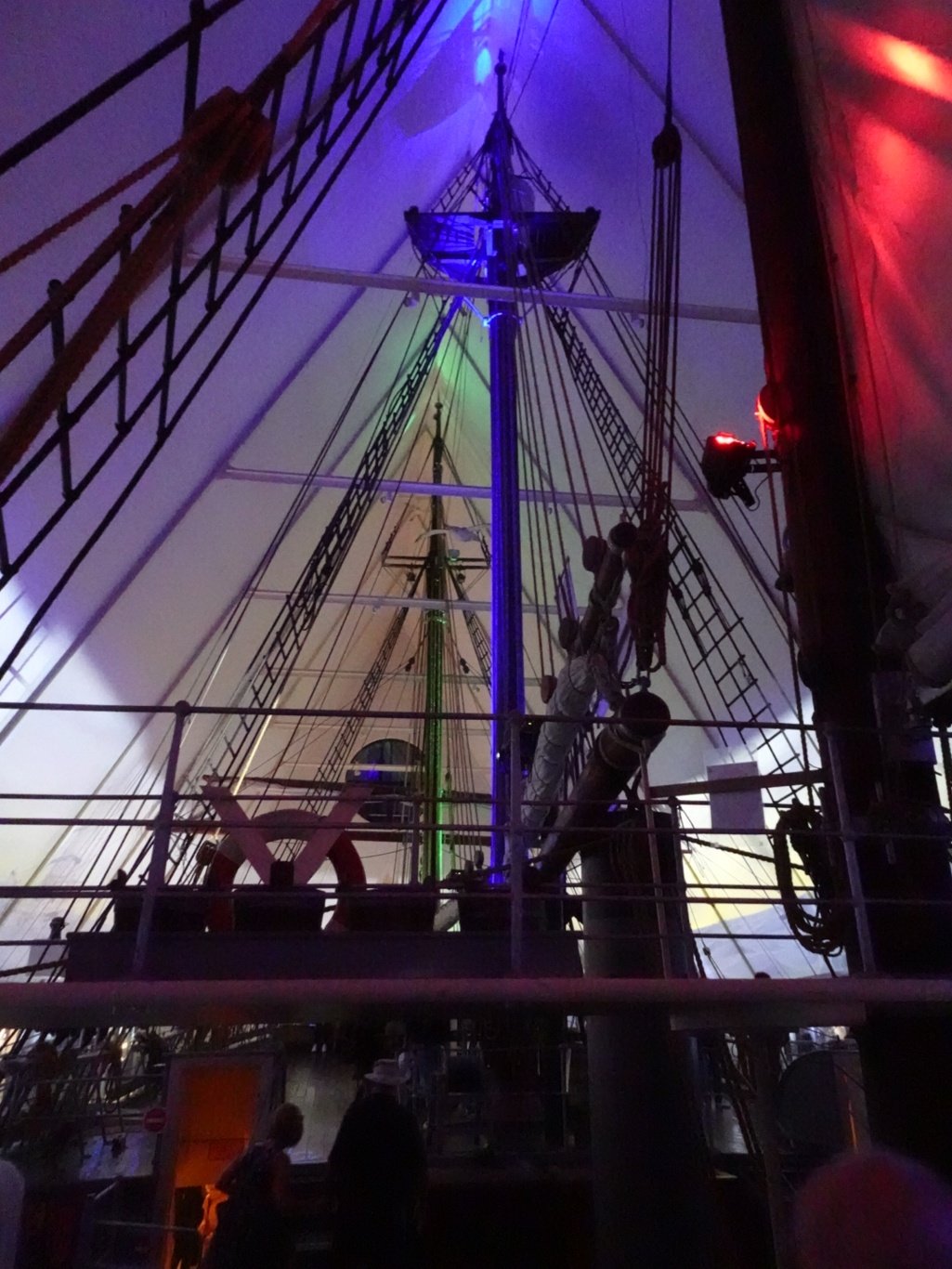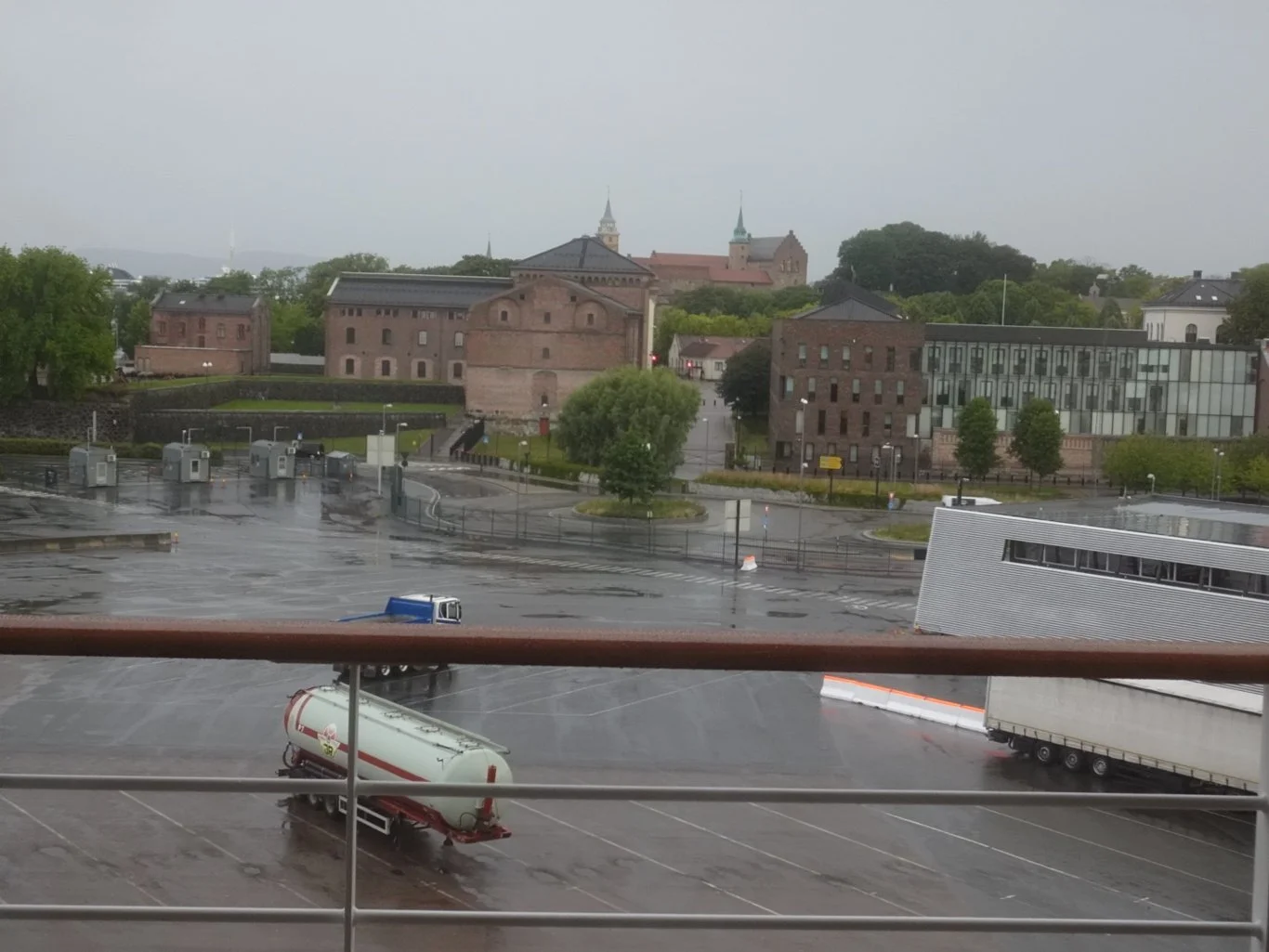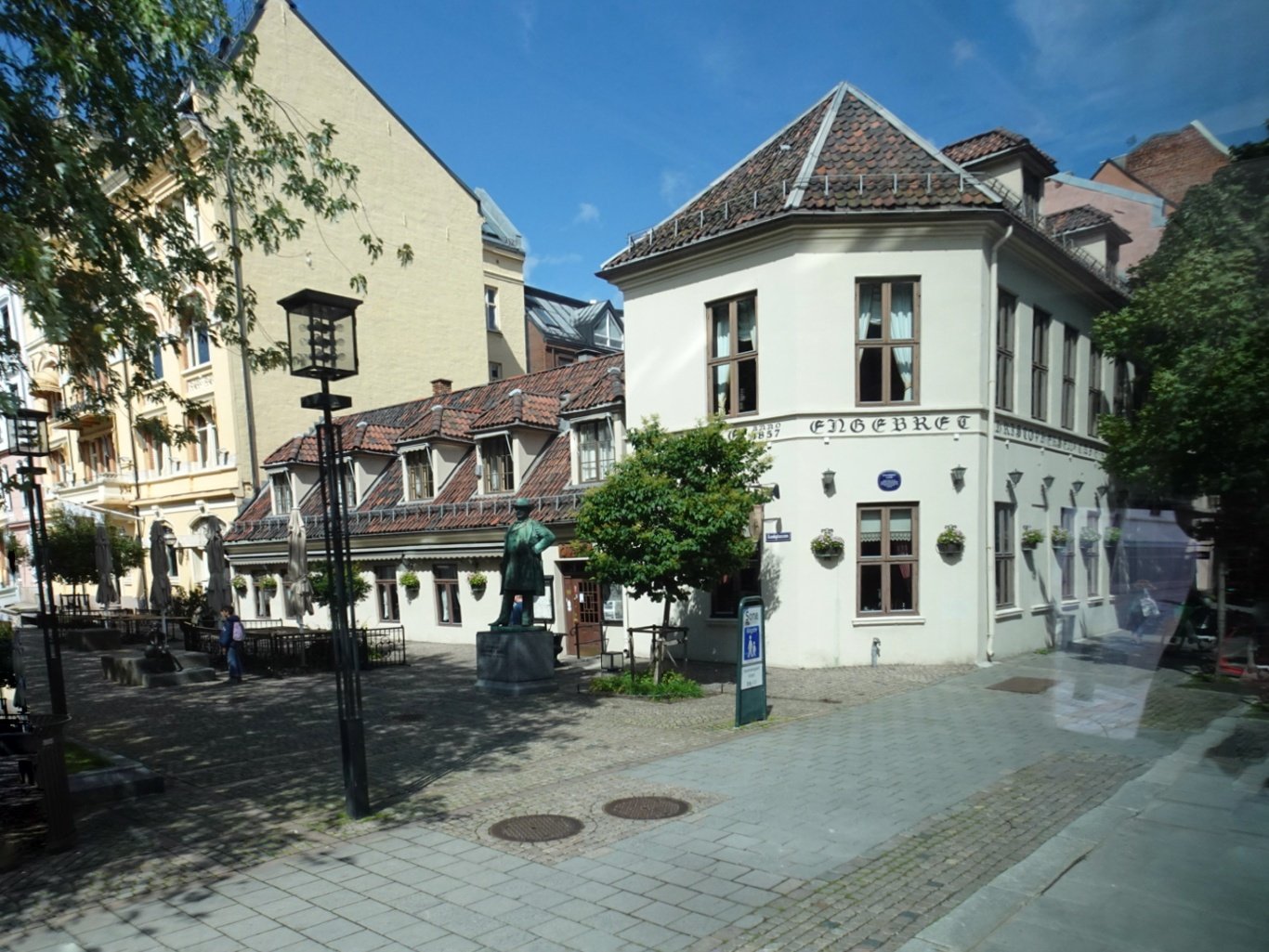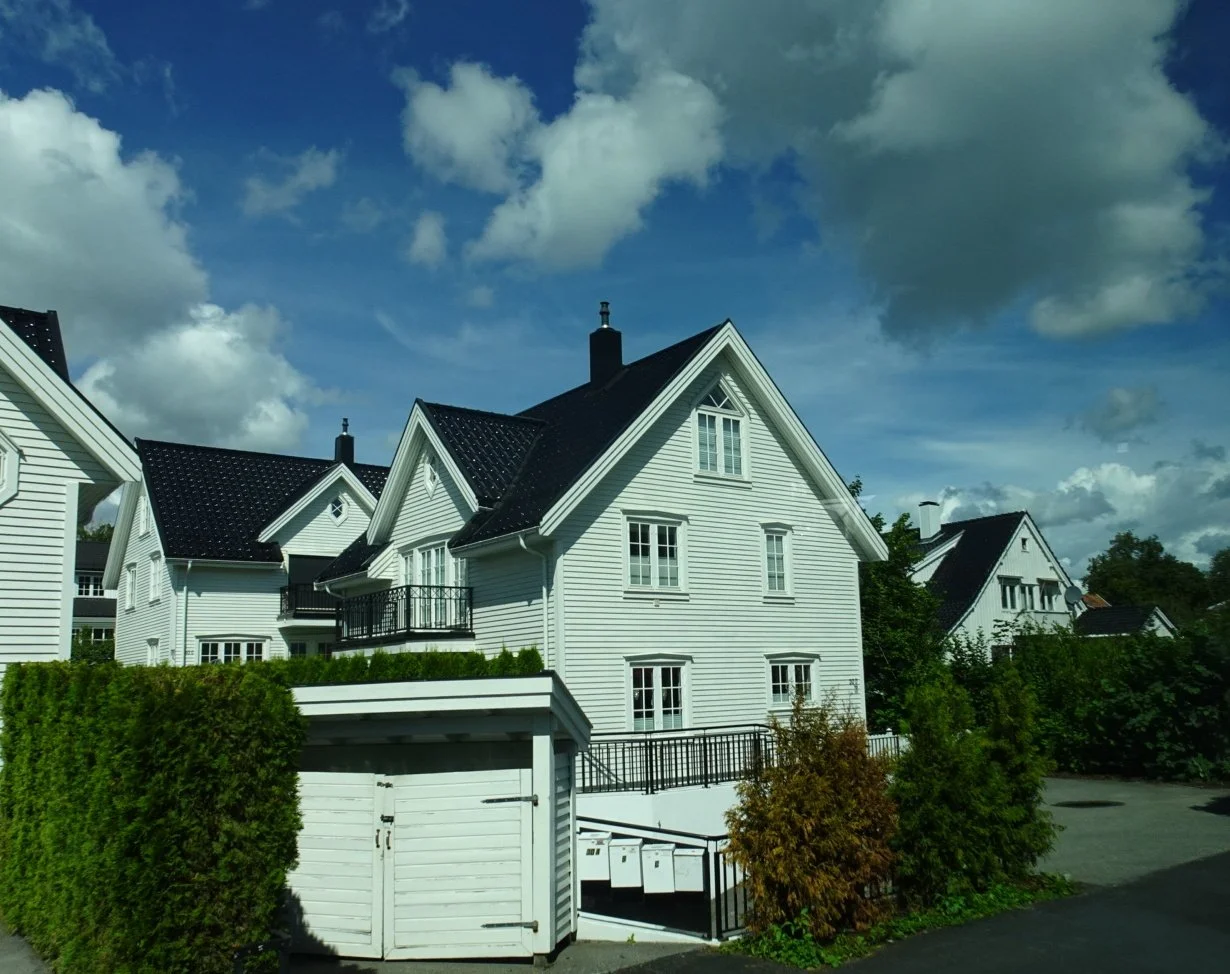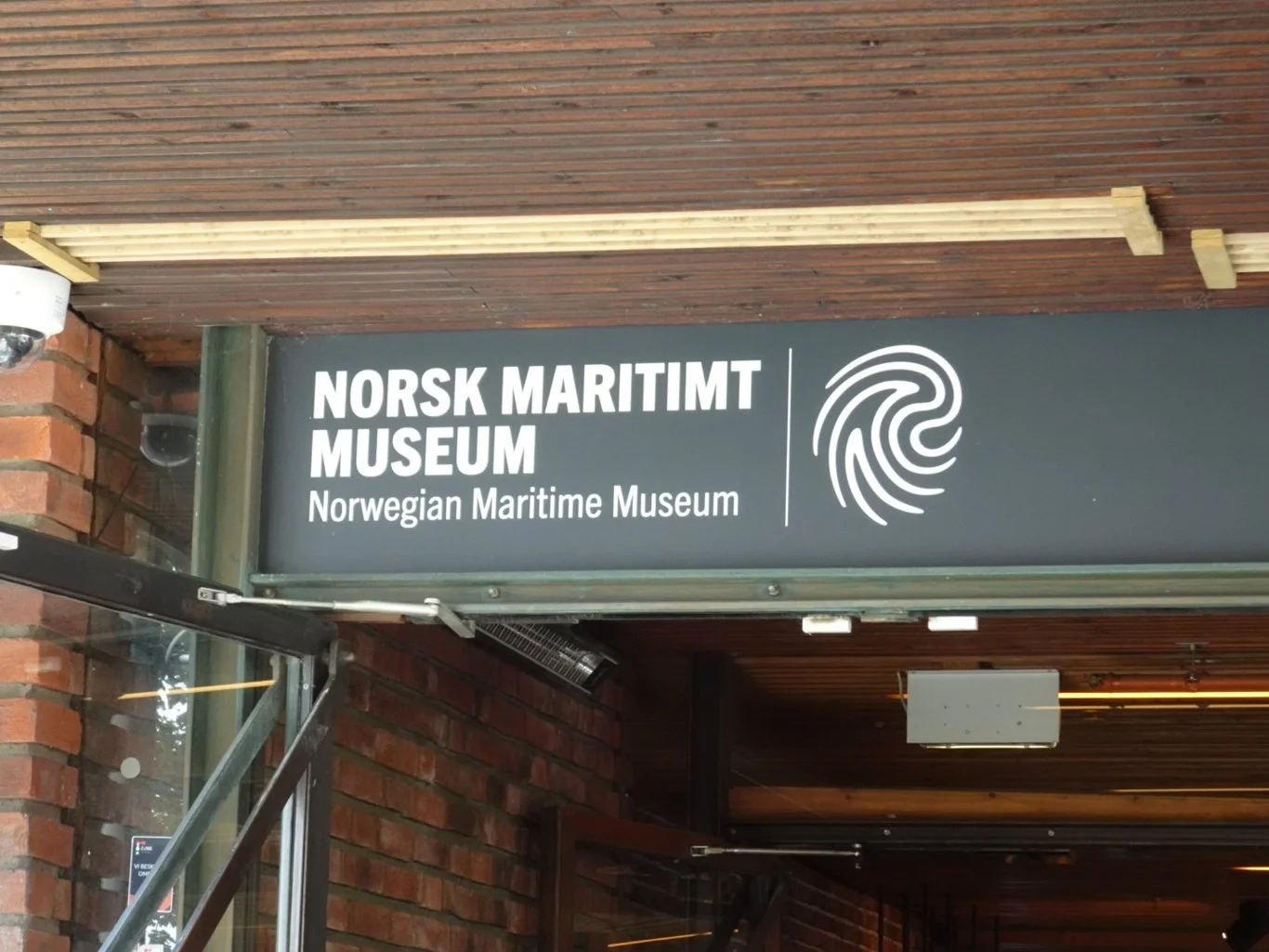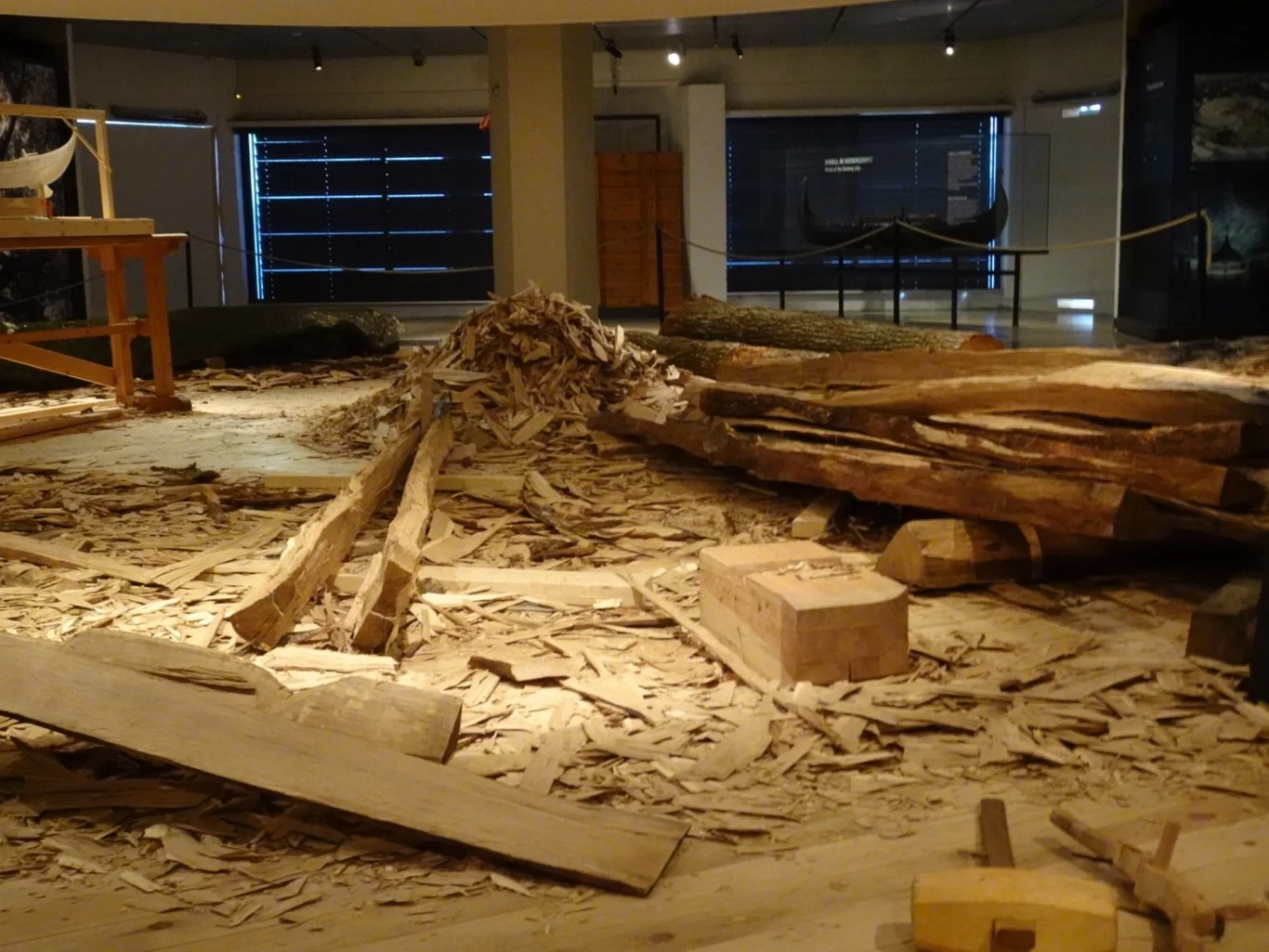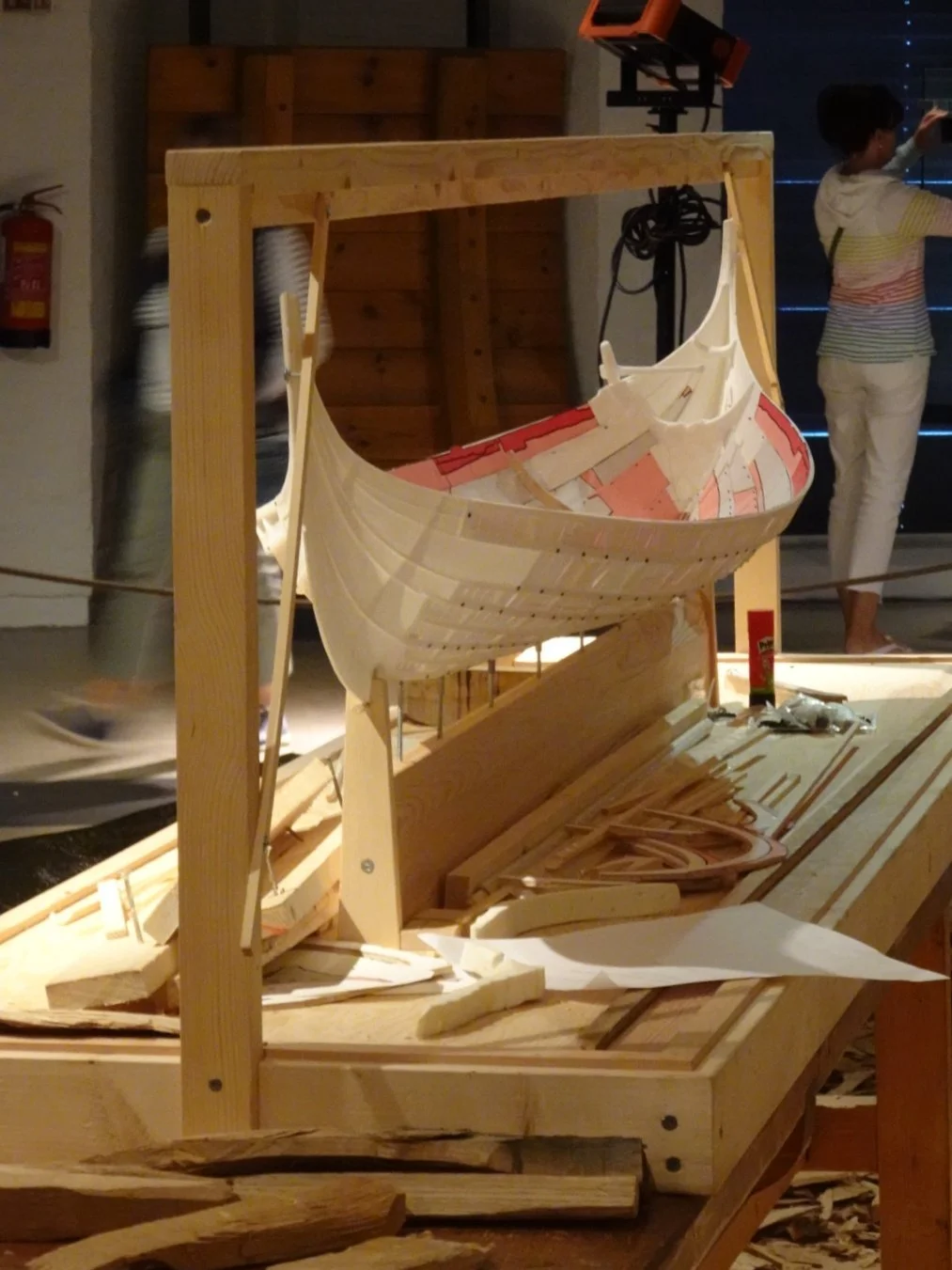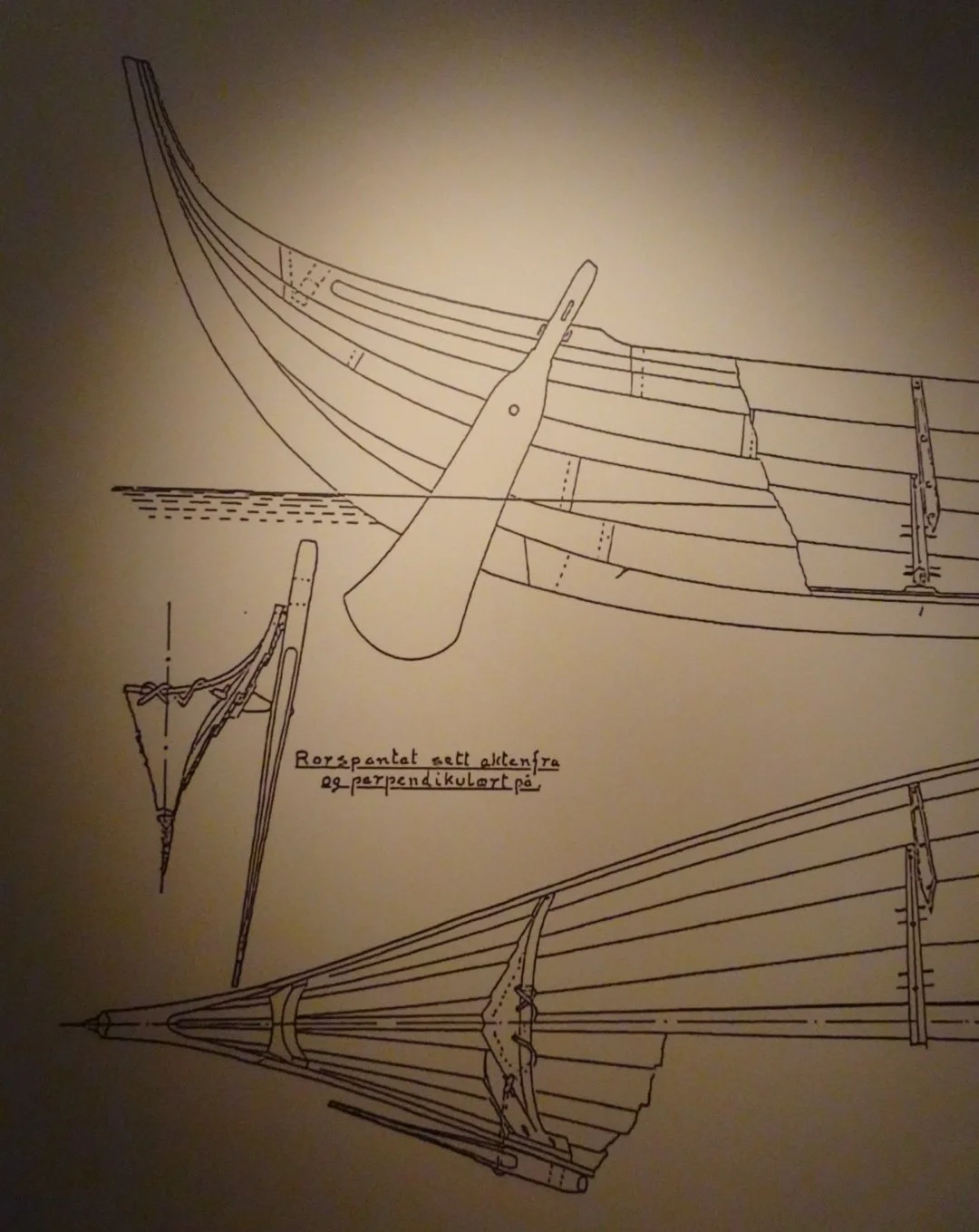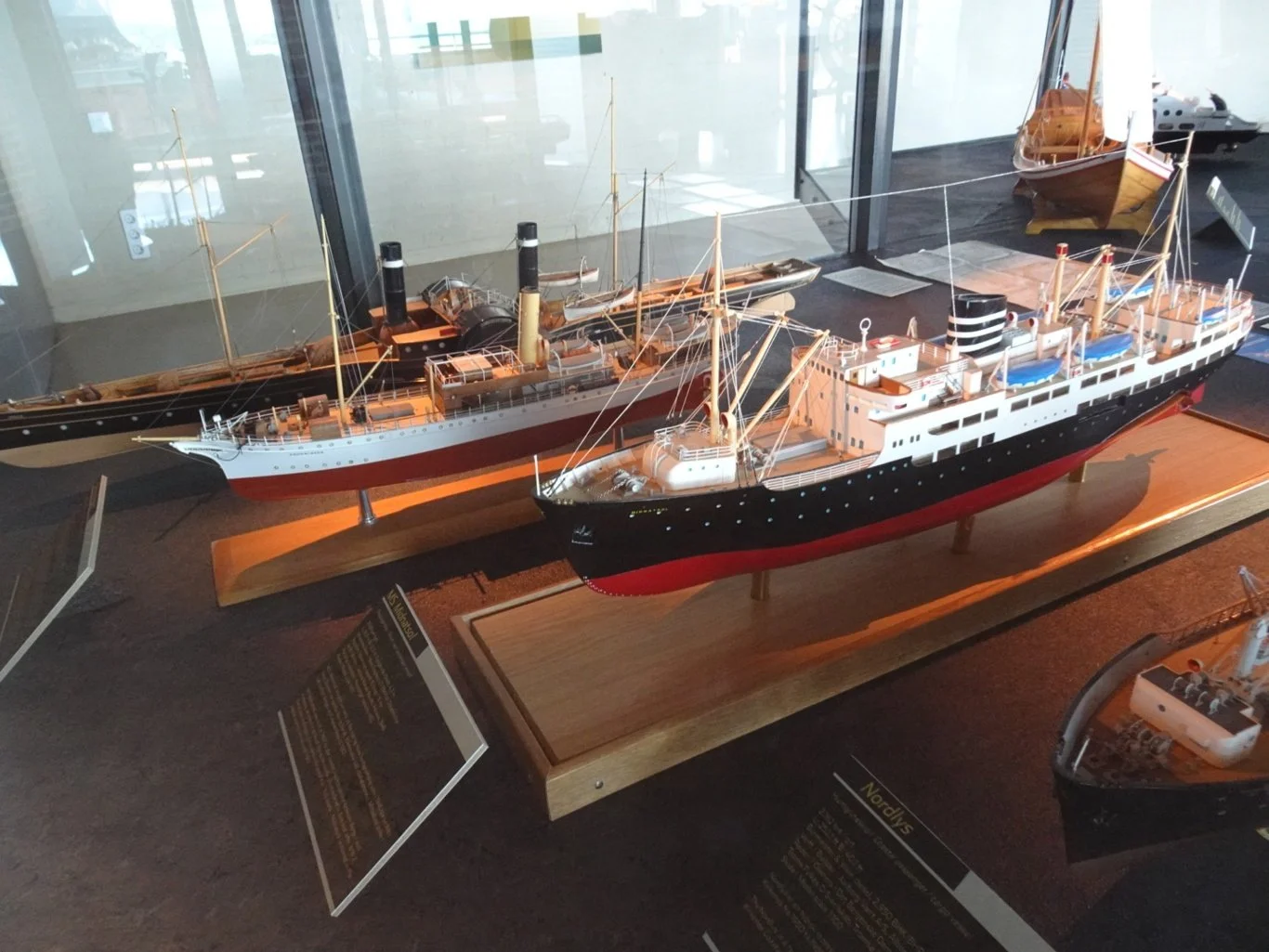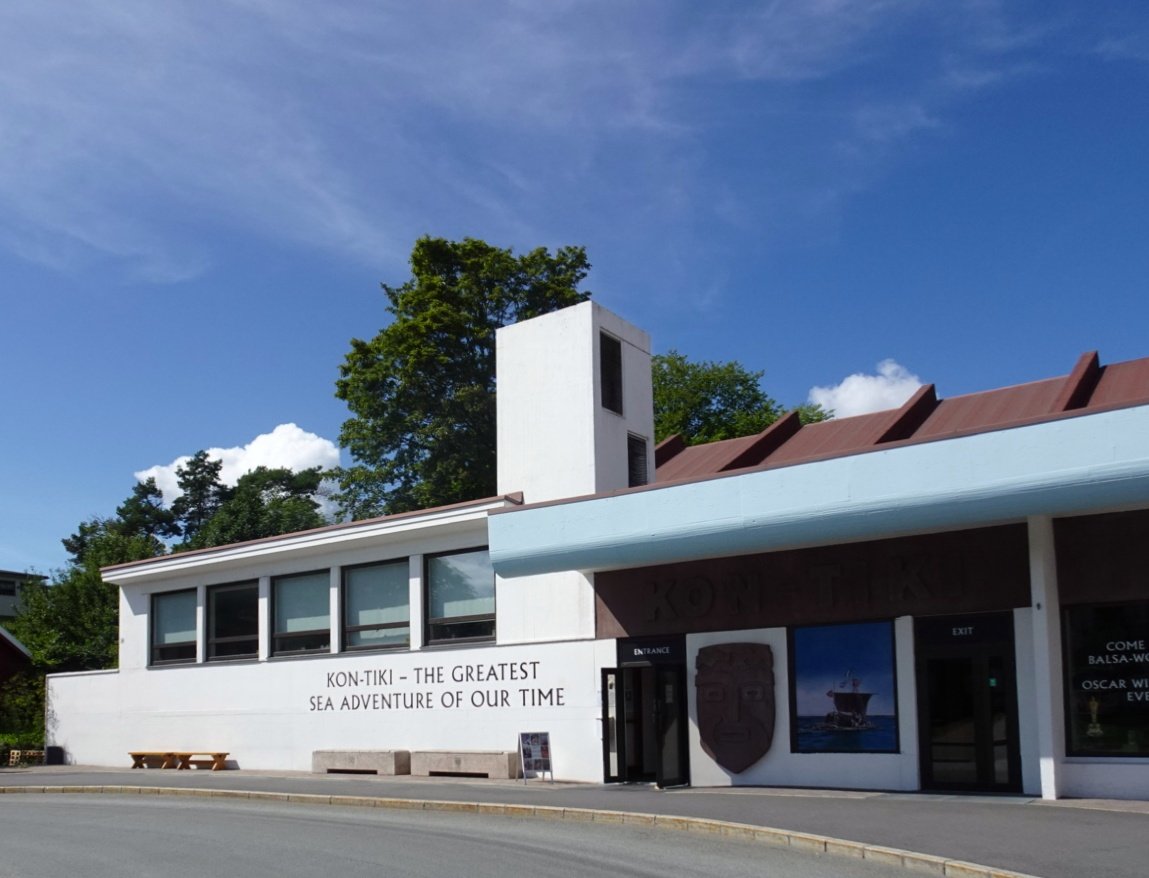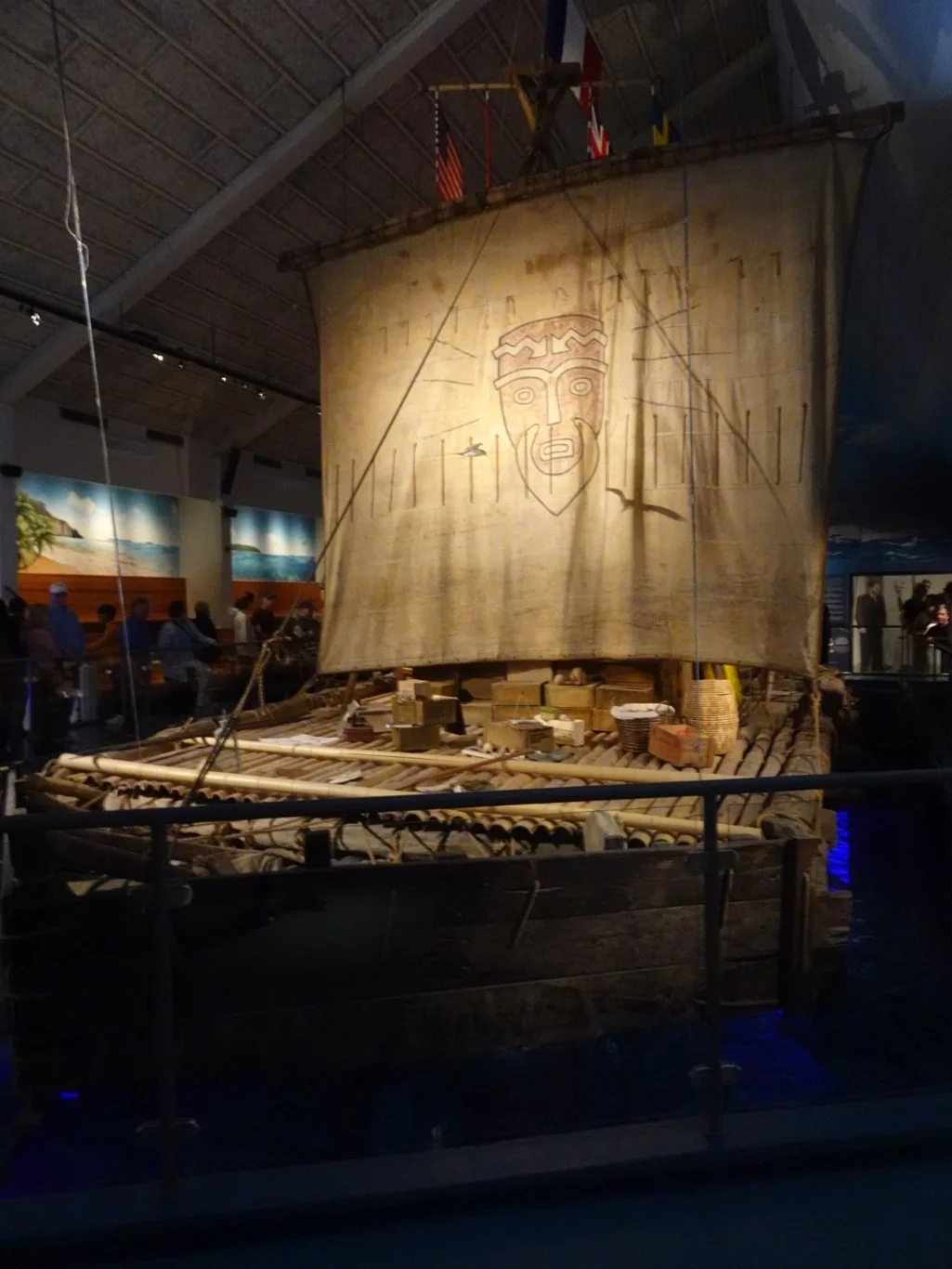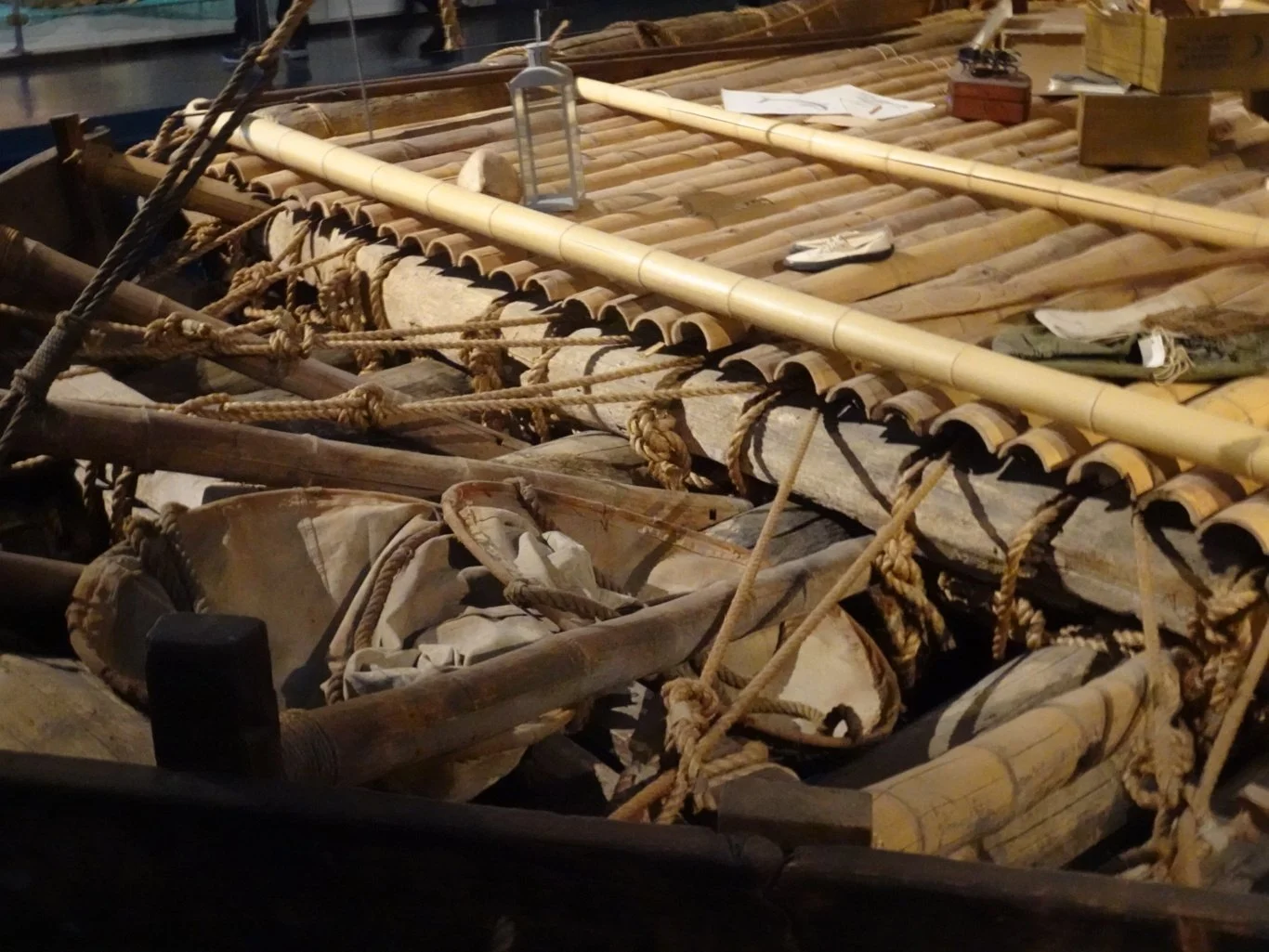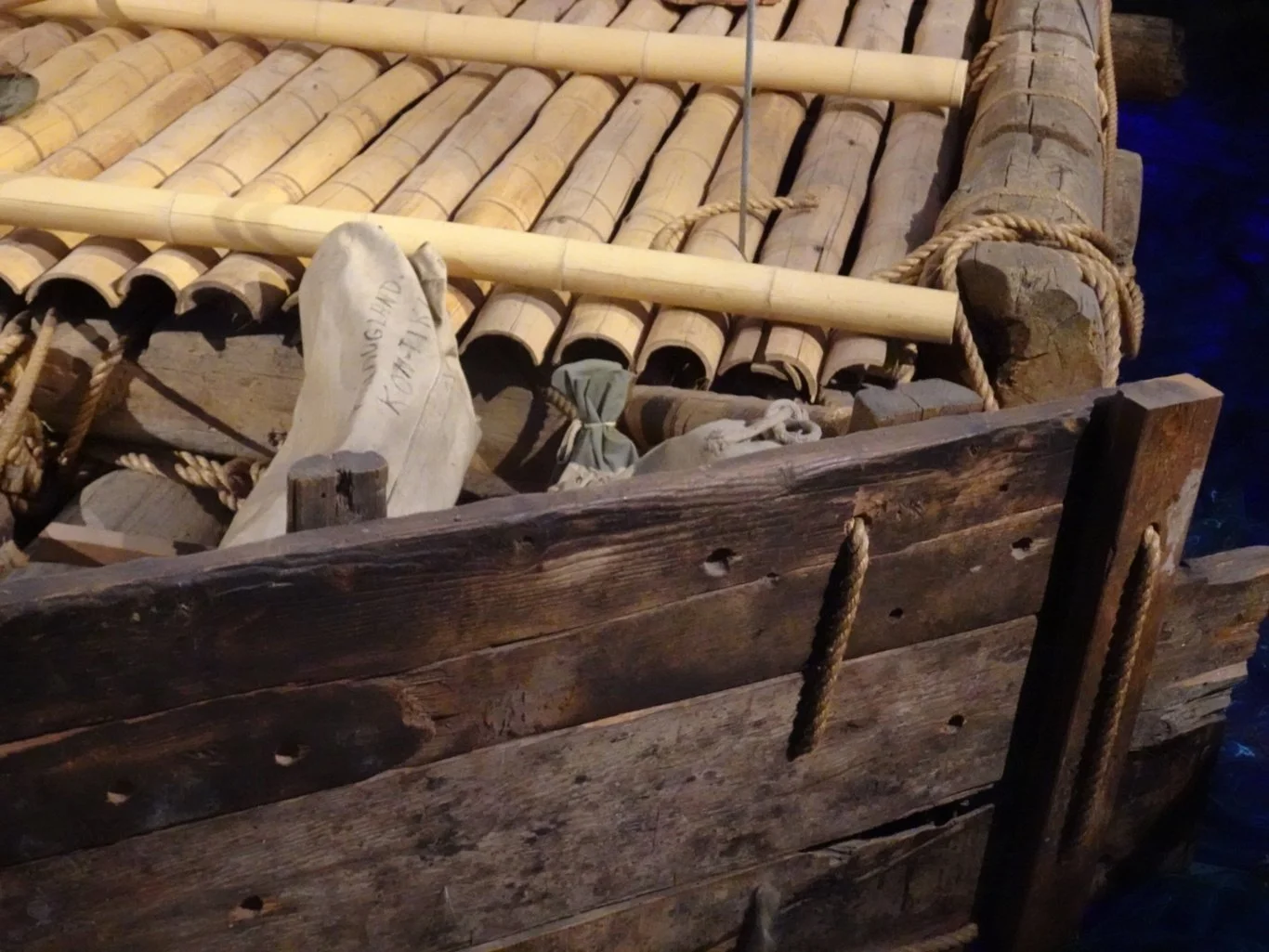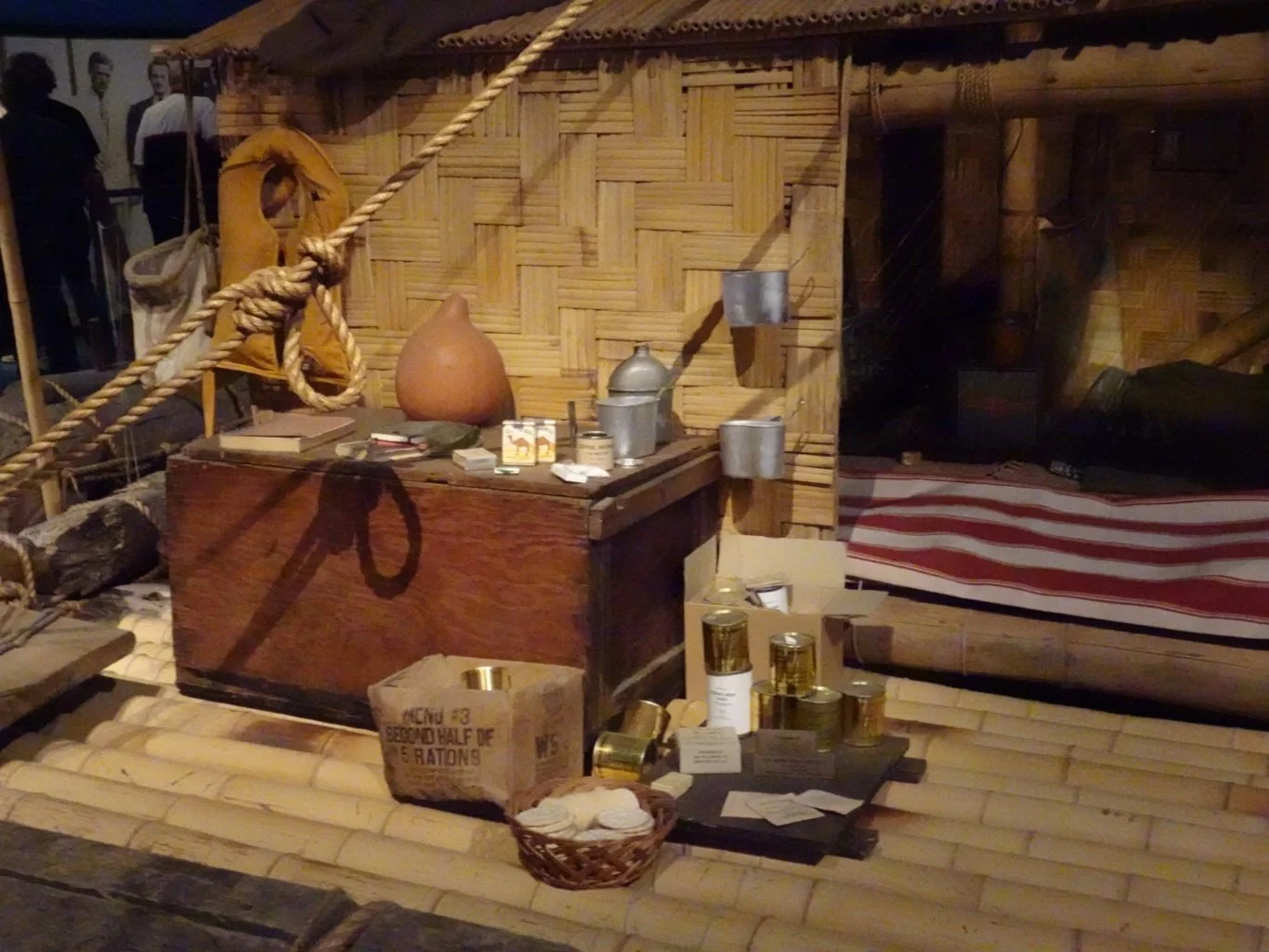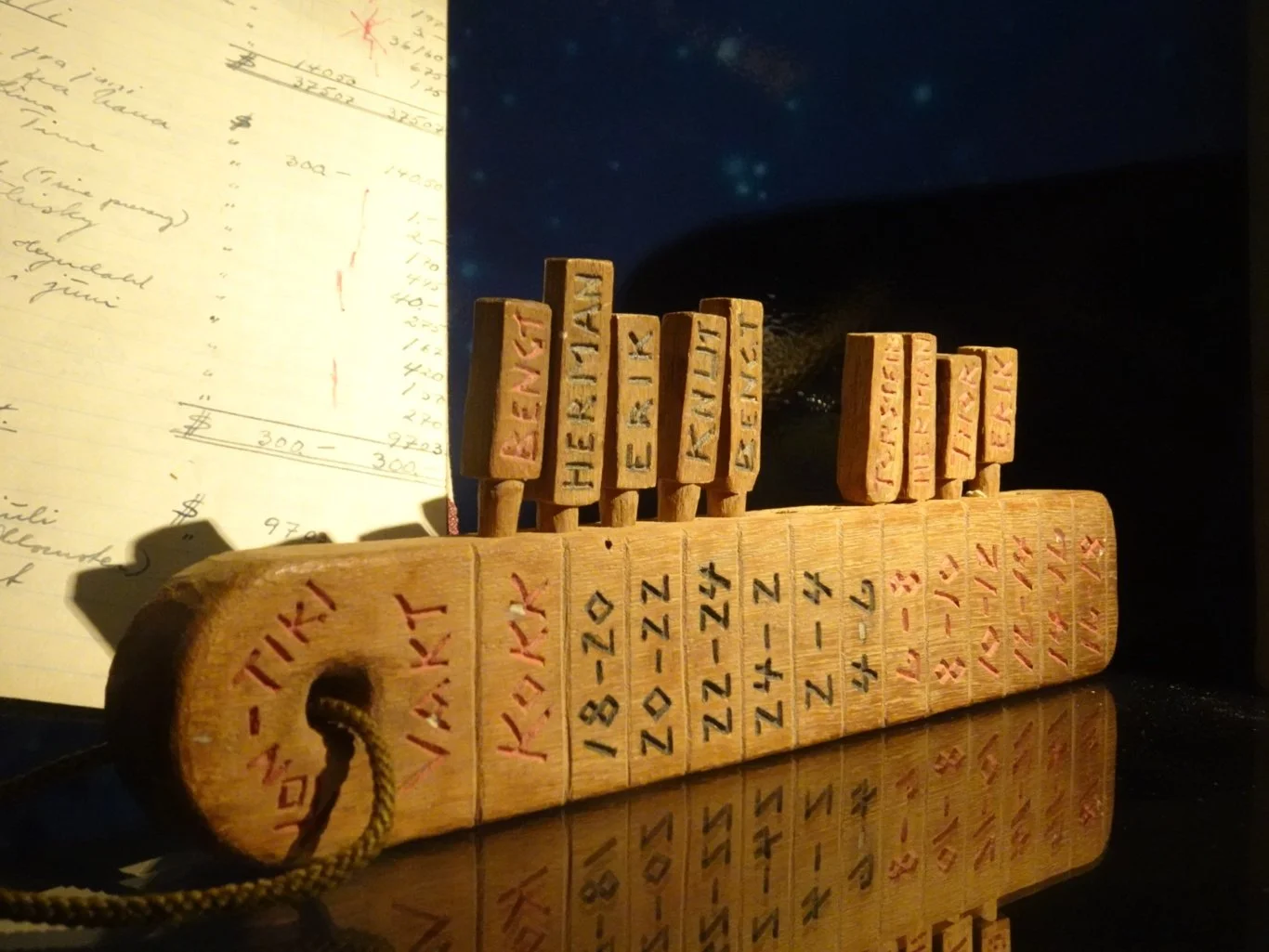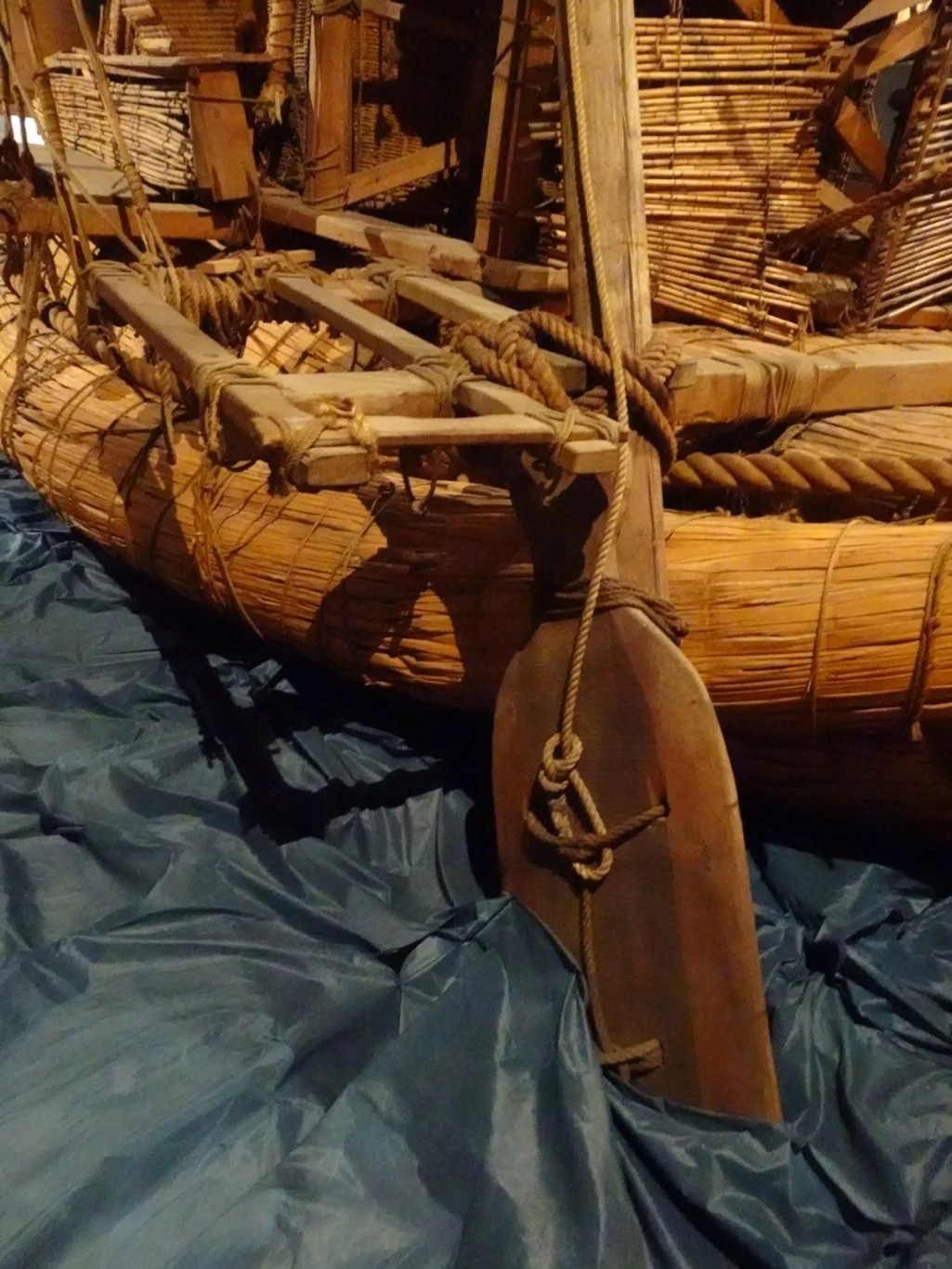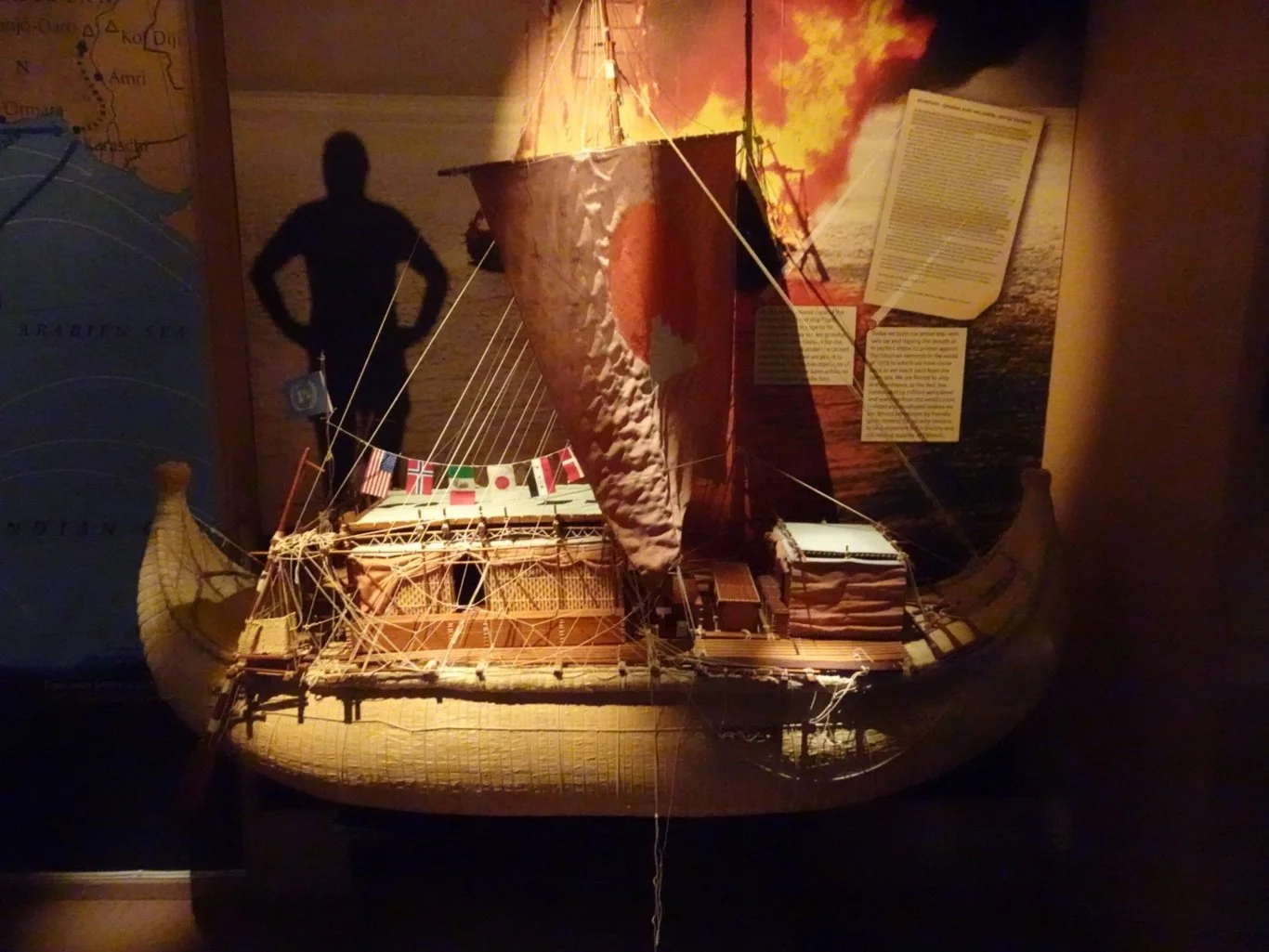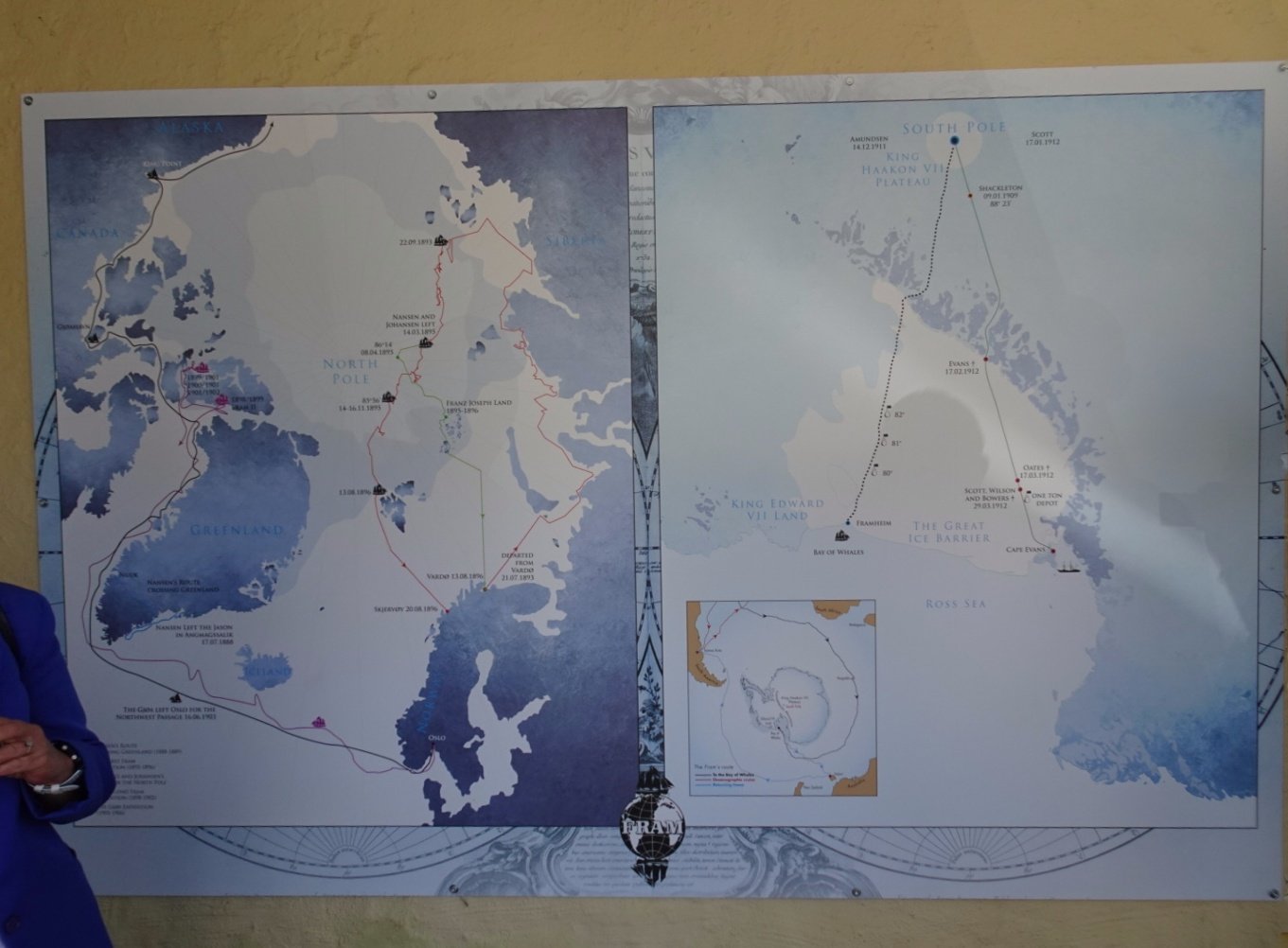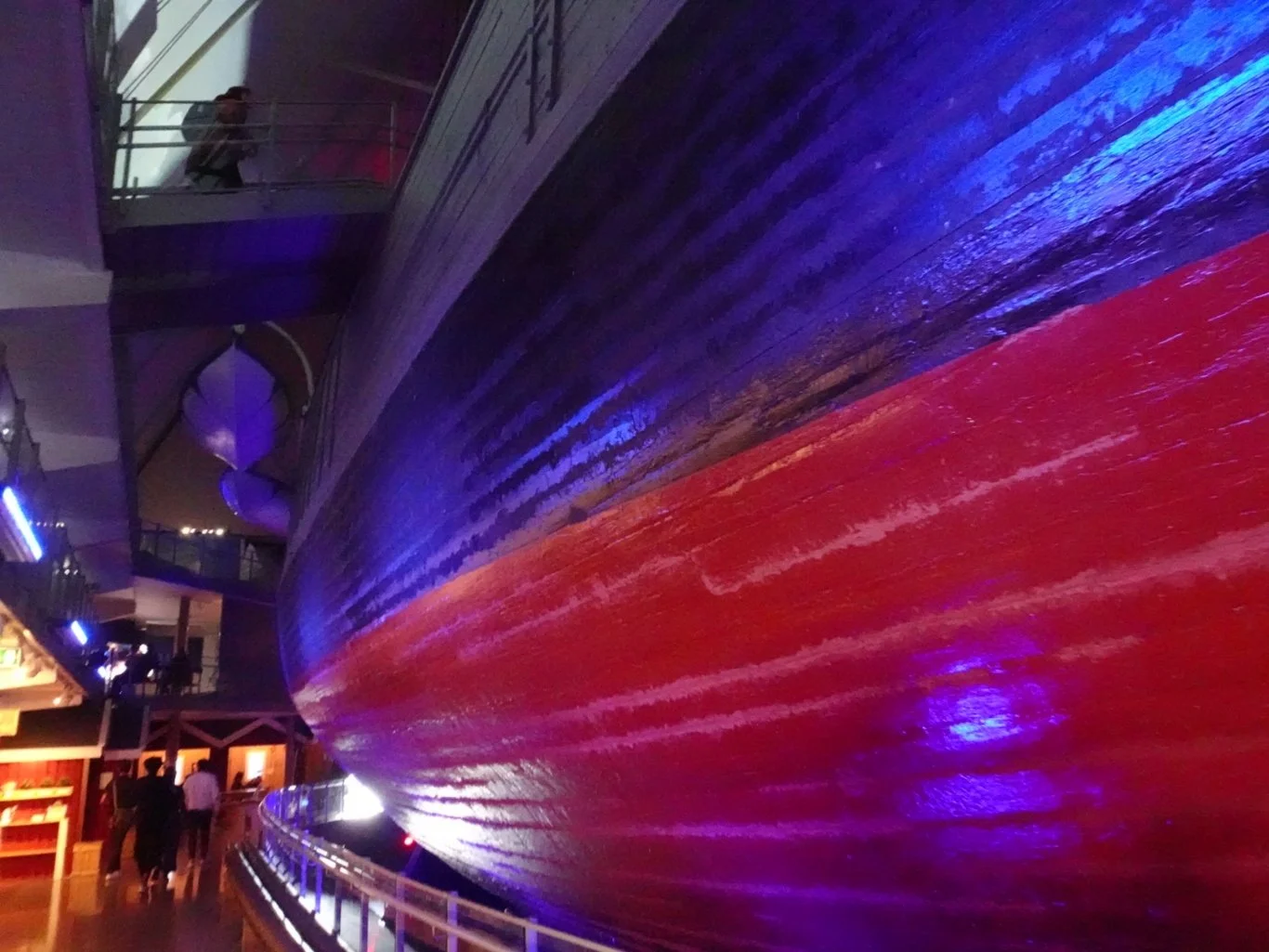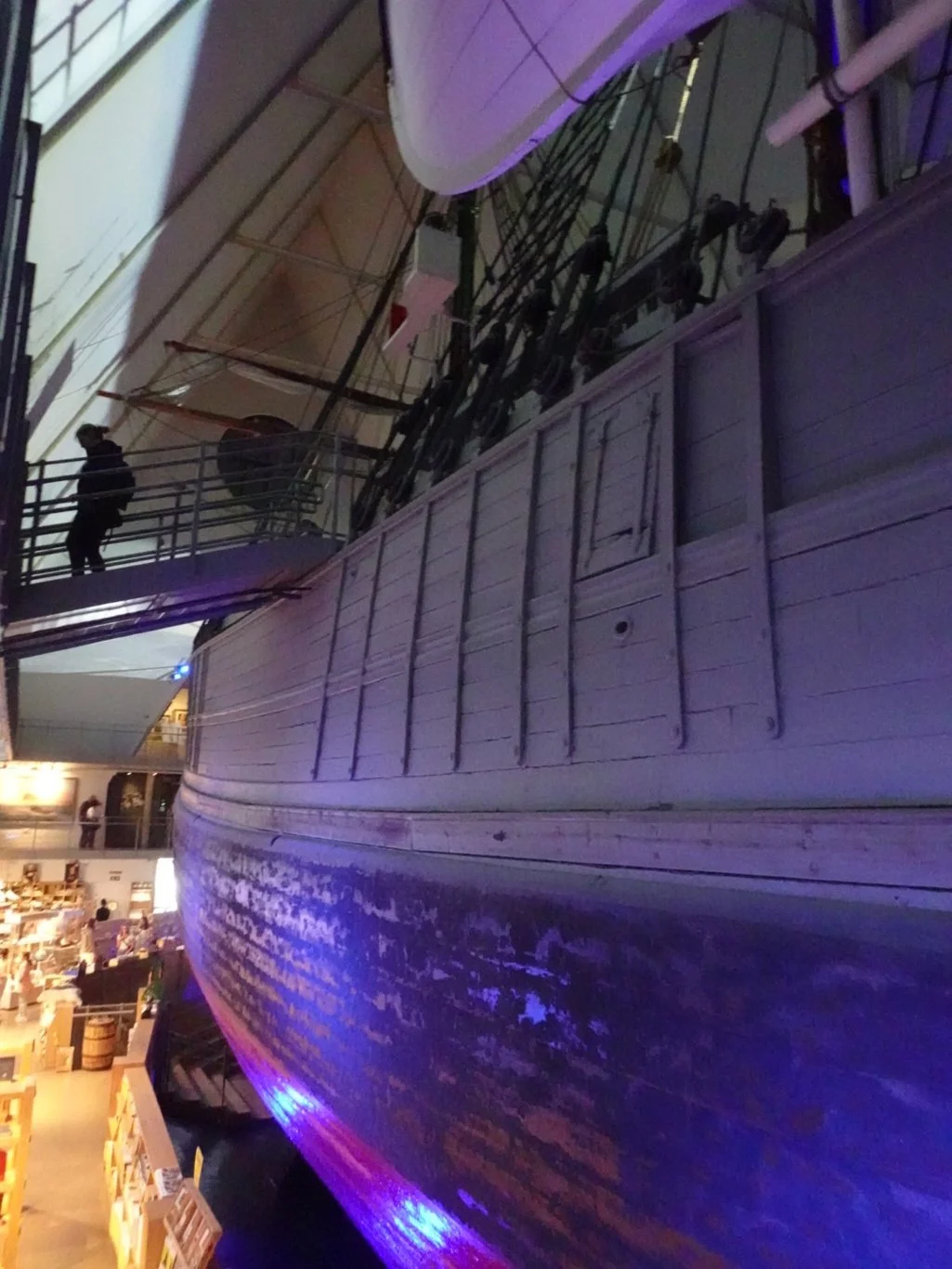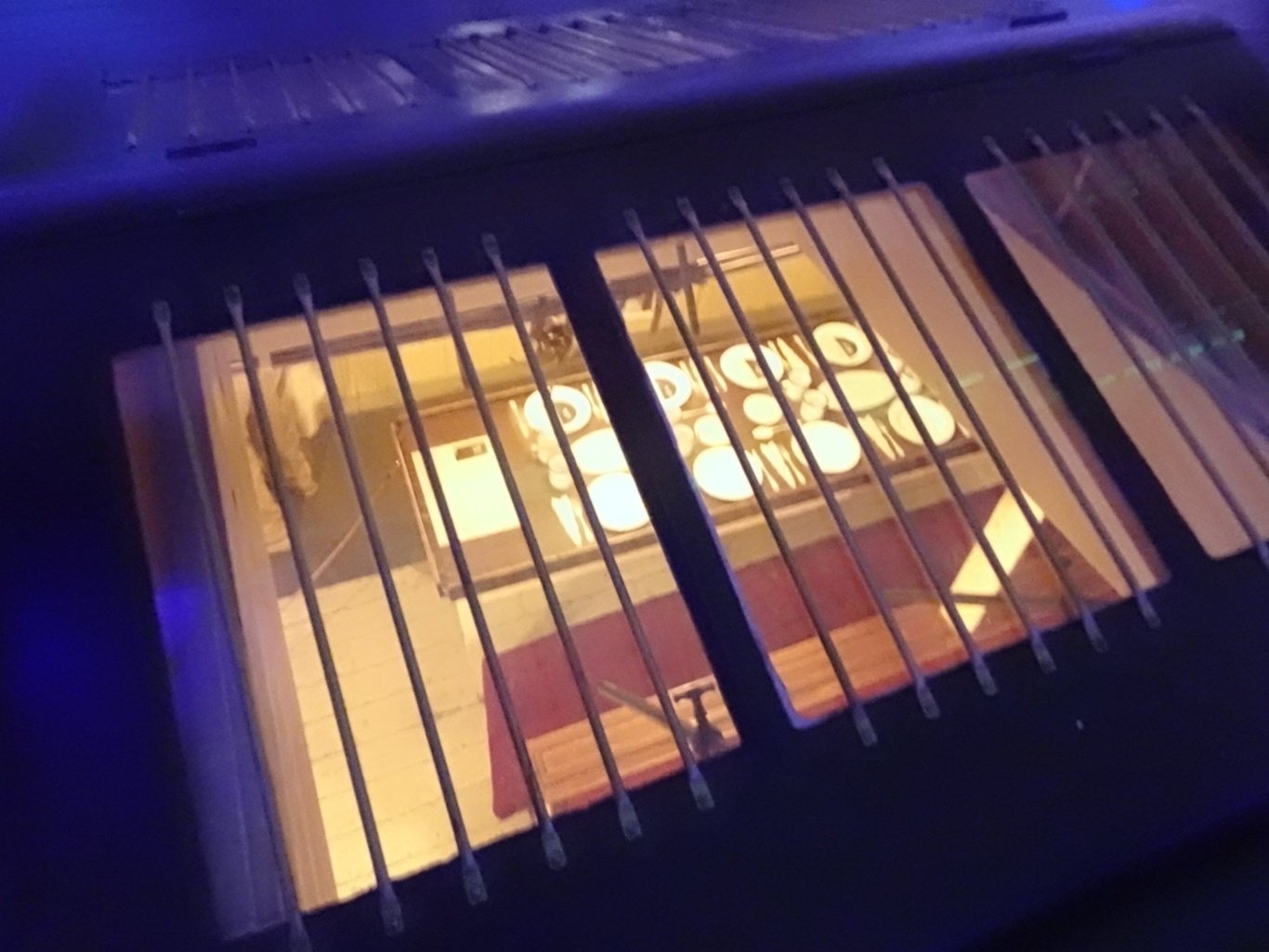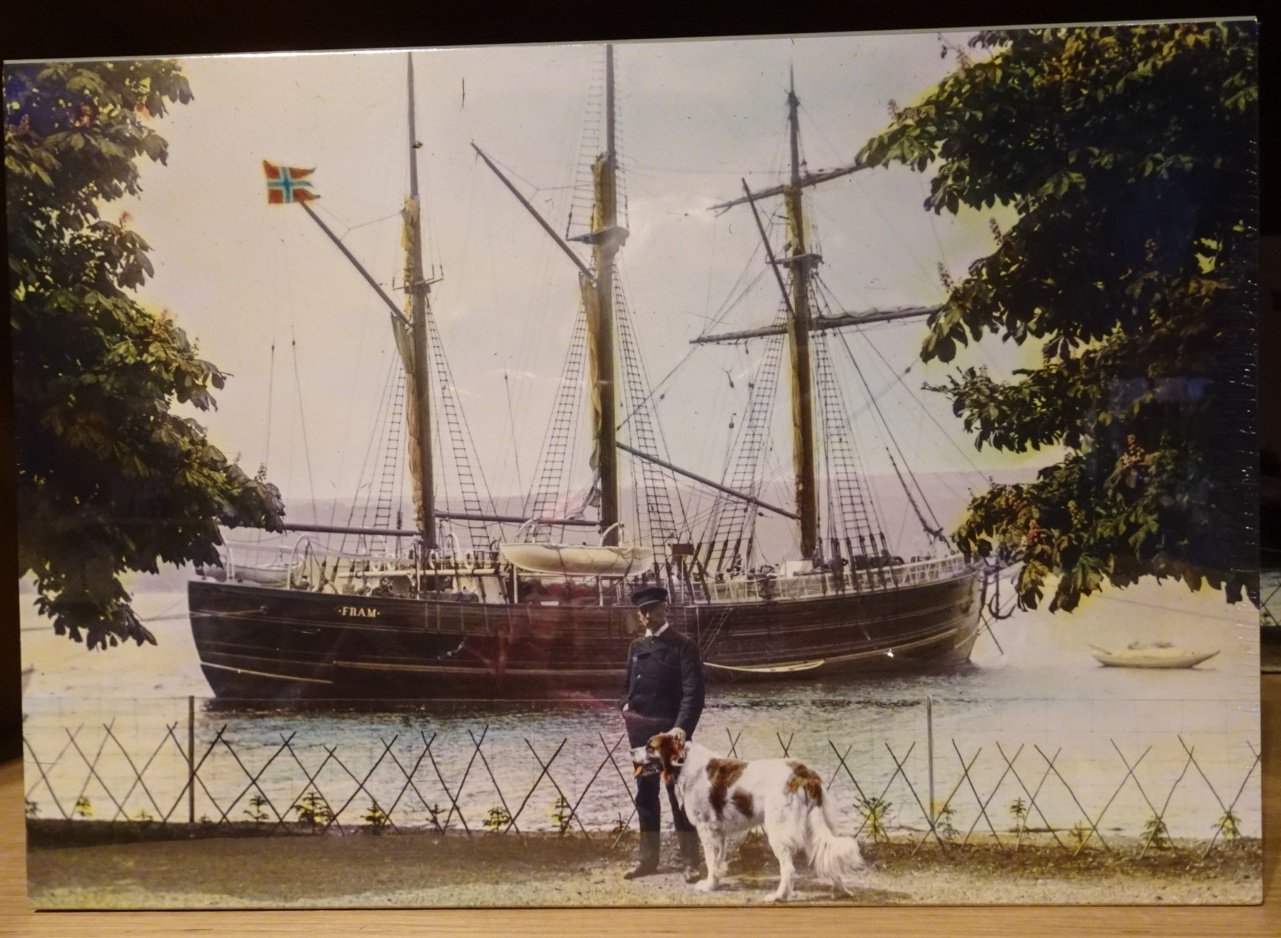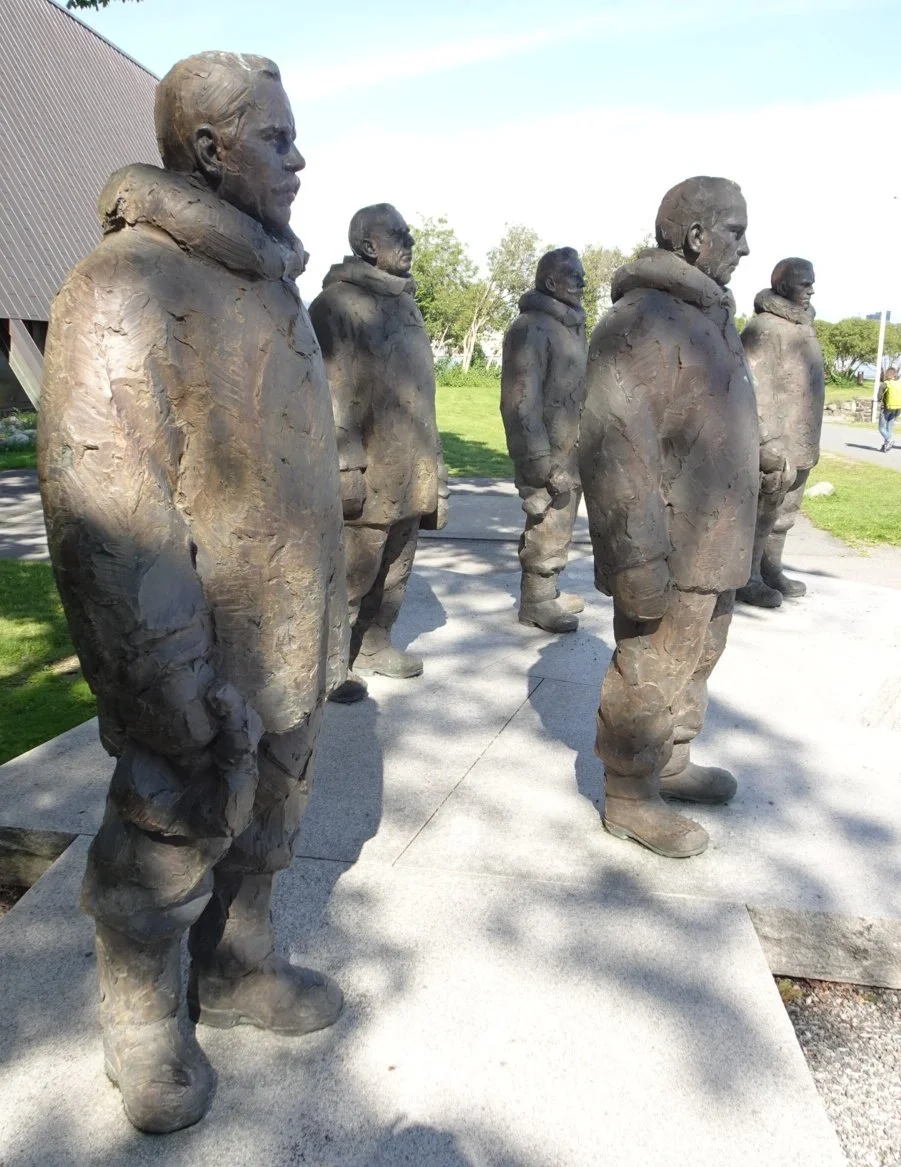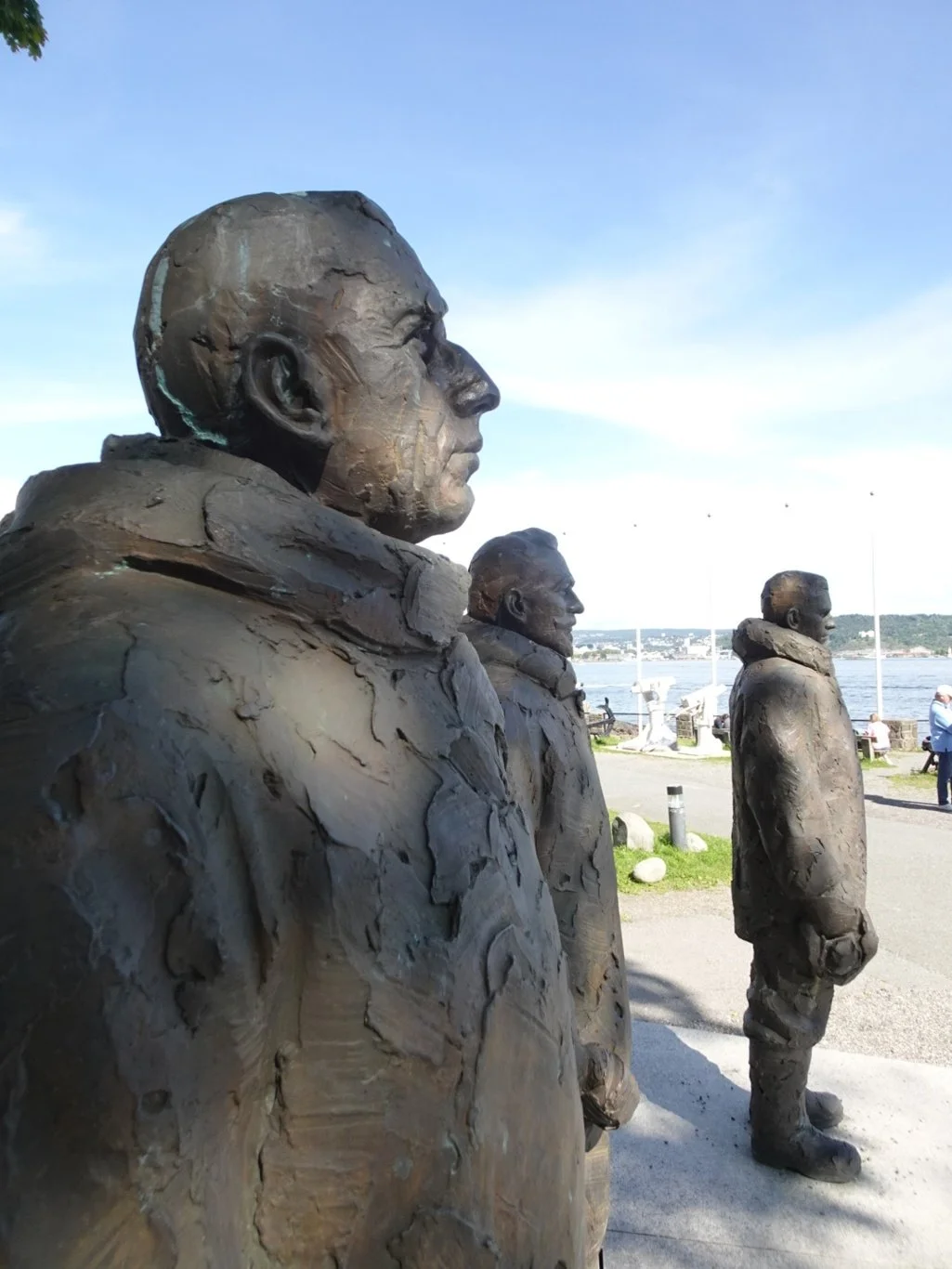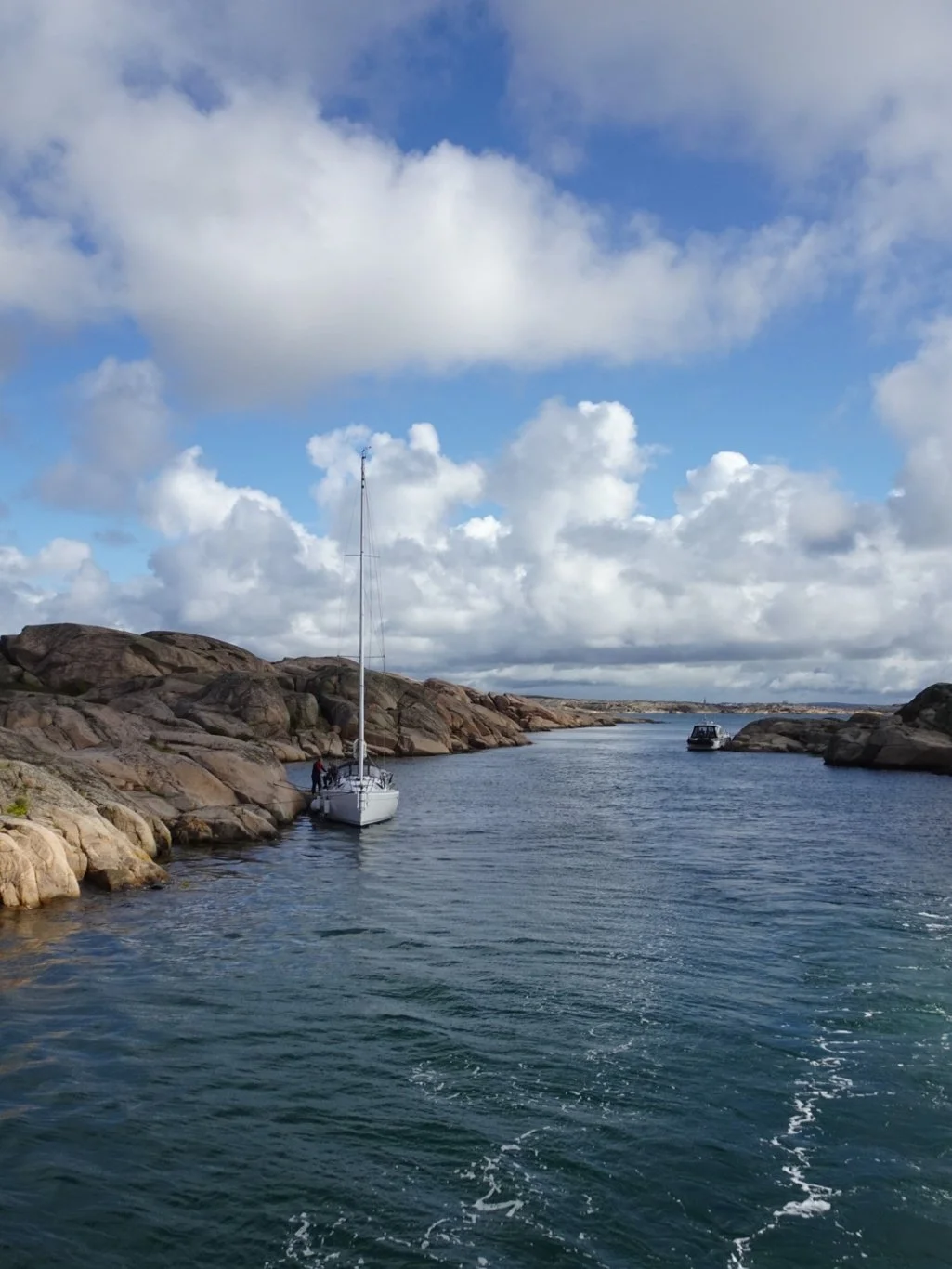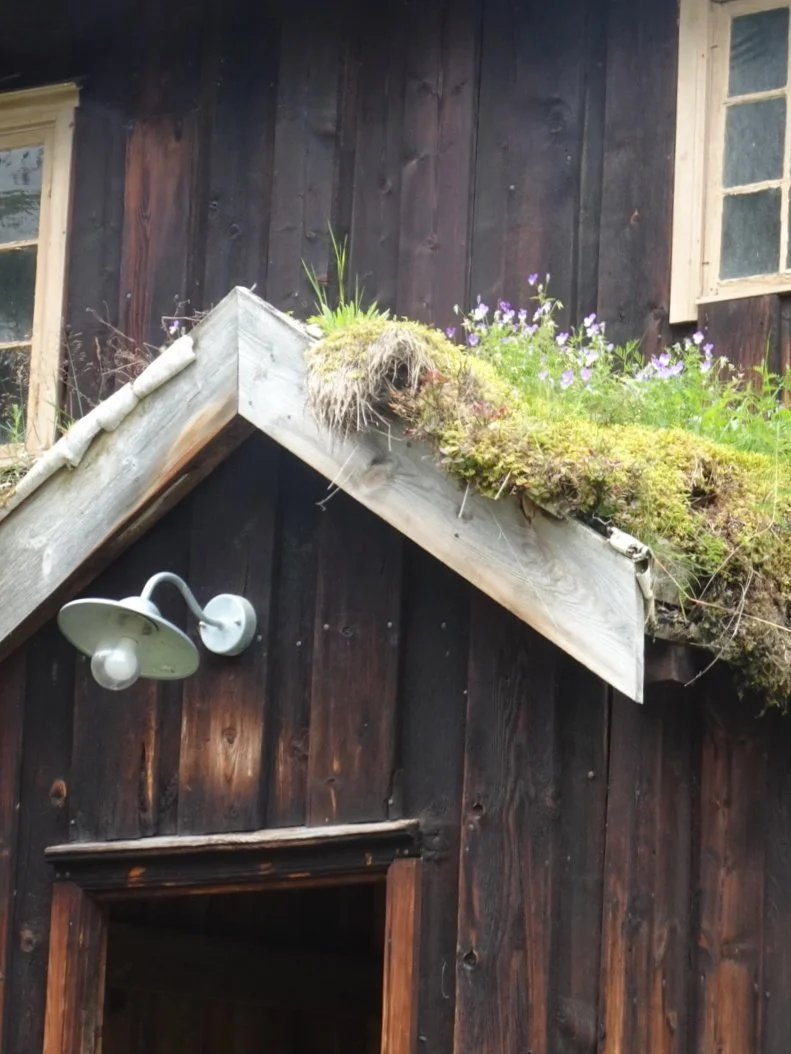In Oslo
We woke to a wet morning in Oslo, though the forecast was better and optimists that we are, we believed it!
We were told that we’d have a berth in the centre of the city and wondered about doing a short recce during the morning, but thought better of it and had a relaxed breakfast instead. We’d chosen a “Beyond the Blueprint” tour focused on the architecture around the harbour; the new Opera House, Munch Museum and so on, but sadly, we received notice that it had been cancelled. Instead, we’d been given tickets for the Maritime Museum tour which didn’t fill us with enthusiasm! Still, we decided to go for it, see what’s what and remember that we’re here for two days, so “there’s always tomorrow”!
We met on the quayside just after lunch and set off through the city, noting immediately that we had a first class guide, Annie. In the short time it took to reach our destination, we had a good overview of Norwegian history including a recommendation for the TV series Atlantic Crossing (which we had seen and very much enjoyed), and an insight to life here in Oslo.
“If you are looking at this neighbourhood and thinking it looks pretty smart, then you’d be correct” she said, as we drove through the area near to the Royal Summer Residence. She went on to point out the shiny black roof tiles on a group of white houses, which she explained were Dutch, were glazed and cost twice as much as any other roof tiles! However, they looked fabulous, almost sparkling in the afternoon sunshine.
Our first destination was just around the corner. In fact, all three of the museums on our schedule were grouped around the car park. We began at the Maritime Museum and Annie announced that she had arranged for us to have a short presentation from an archaeologist, after which we’d have time to wander around by ourselves.
We sat on tiered seating to hear Jenny speak about the Viking boats that had been discovered here and the project to recreate them in traditional style, using only the tools which were available to the Vikings.
It’s a project which will take several years because the work is slow and painstaking. She explained how repairs and reconstructions made in the 1950s had since been discovered to be inauthentic and recent research was informing this latest project. Fascinating!
Already, we were so glad we’d come along! Though we probably wouldn’t have chosen this particular tour, we were loving the experience.
I was glad to learn that this project, called “Clink” was named from the Norwegian terminology for this method of boat building, which we call “clinker”, just like the boats I rowed in as part of my college crew all those years ago! I know nothing about boat building except I can recognise a clinker built one!
When Jenny finished her talk about the Viking boats (made to a different design depending on whether they were built for “raiding or trading” - love it!) I enjoyed looking at the drawings and designs around the side of the studio and we agreed, we could easily have spent much longer here.
But we both wanted to get a quick glimpse of what’s to see in the rest of the museum, so with a fairly speedy zip around the displays of cruise ship history and other Norwegian seafaring themes, we checked our watches and met Annie outside again.
Time for the next museum.
Across the way was the Kon Tiki museum. Now my Hero and I remember the name from our childhood, from watching Blue Peter programmes on TV and so on. But I, for one, knew very little about it beyond the name Thor Heyerdahl. As before, Annie gave us a quick overview of what was inside, what we should look for and gave us a time to meet back here when we were done. She added “Norwegians don’t do replicas” - what we were to see was the real thing.
Our first impression was that this “raft” was huge. Too big to fit in my camera shot (and the museum is so tight that it’s impossible to step back any further to get it all in!) Just imagine, this boat had sailed across the South Pacific Ocean, from Peru to French Polynesia and here it was, all these years later looking in pretty good shape.
I was interested in the detail of how it had been constructed, in the knots that held it together and was thankful of the excellent lighting that showed all of this so well.
Effectively, this balsa wood construction had been stitched together!
It was interesting too to see the kit they’d taken with them. What was essential to the journey was all pretty basic, for sure.
I especially loved this simple but effective means of showing the daily watch rota. No electronics, no paper (though there was a log book or two), this simple peg and board was a clever device indeed.
Around the corner in another gallery was Ra, the vessel used by Heyerdahl for his second expedition. This one had been constructed with the advice and expertise of the people living on Lake Titicaca and their influence was clear to see in the design.
Once more, it was really skilfully displayed and very well lit.
Last but not least was a model of the Tigris. This had been one of Heyerdahl’s final projects and by now he had become pretty disillusioned with the world and the future of mankind. Annie had told us of this, explaining that he had “burned it in disgust”.
After this whistle stop tour through another fascinating story, we met Annie by the Moai, the Easter Island figure outside, ready to cross over to the third and final museum just behind it.
But first, we needed to know a little of the story of Nansen, Amundsen and co - or rather, about The Fram, the ship in which they sailed. It was a fabulous story and well worth reading about here
Just like the Kon Tiki, the Fram is huge and shown in a tight space. After watching a film of the background to this ship, we were eager to see it all for ourselves. But to begin with, it was quite difficult!
And then we discovered we could actually go on board!
Of course we did…though the lighting was tricky and I was always fearful of tripping over a rope or a chain…there were little steps here and there and I really didn’t want to fall!
So we took care, stepping over things and taking it slowly, peering down into the dining room, set for dinner - how many times was it fish for dinner, do you think? Bearing in mind where this ship had sailed, just imagine what tales of adventure these decks could relate!
Recalling Annie’s story of the North Pole expedition, we remembered to notice that the ship had no keel, so it could “float” when frozen into the ice, too. Once again, our appetite was whetted to learn more about this ship and its adventures.
And since I couldn’t get a good mental image of what the Fram looked like as a whole, I quickly snapped one of the postcards in the shop. I think that’s Nansen and his dog there.
So much to see and in a short time, impossible to catch it all. In true Thomas fashion, we were at the meeting place early though, so I ran over to get a picture of the five bronze figures standing by the fjord, overlooking the water.
Amundsen and his crew, though it took me a couple more minutes to identify which one was the man himself. He was the one at the back, in the centre, which I hope was indicative of his personaiity. If so, I like him.
Thanks to Annie, we had a great tour and in the best of ways, were left wanting more. We returned to the ship talking of a weekend in Oslo sometime, for there’s so much to see here, there are ferries and great public transport too. For now though, we need to get back in time for the afternoon Trivia!







